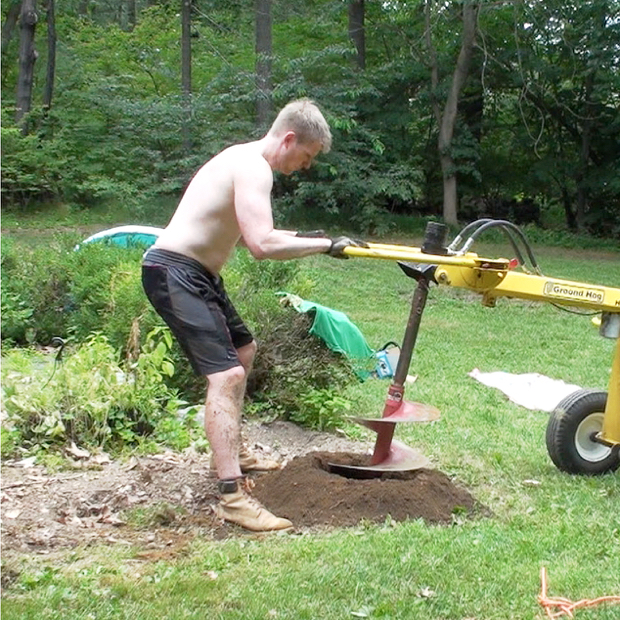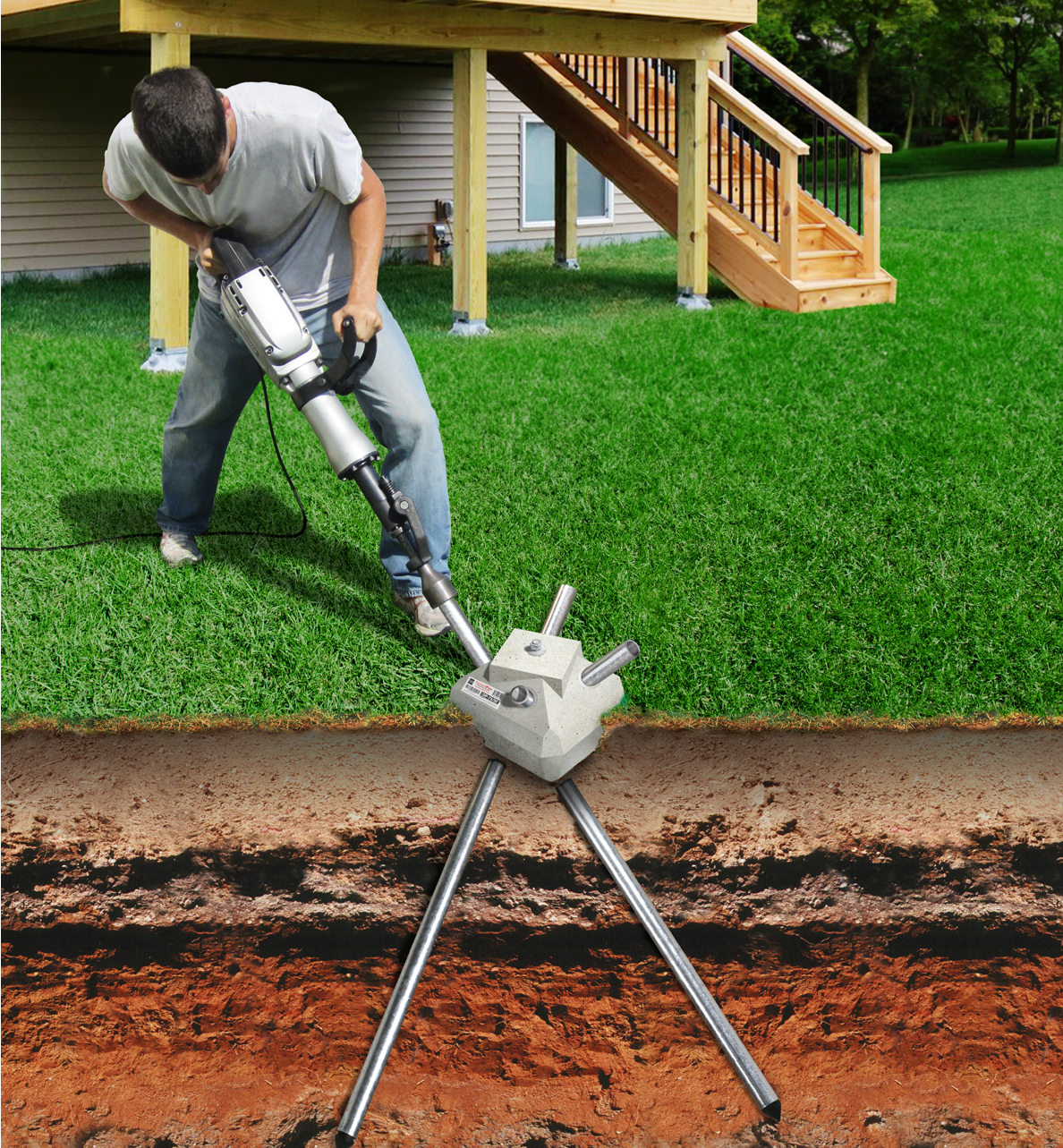Deck Footings 101: Navigating the Basics for a Secure and Durable Deck
Deck Footings 101: Navigating the Basics for a Secure and Durable Deck
Blog Article
Professional Tips for Installing Deck Footings to Support Your Outdoor Room
When it comes to constructing a deck, one of the most critical elements to think about is the installment of proper grounds. These footings are the structure upon which your outside space will relax, giving security and support for years to come. What precisely does it take to mount deck grounds correctly?
Value of Appropriate Deck Grounds
Correct deck grounds are crucial for guaranteeing the security and durability of your outdoor space. When creating a deck, it is crucial to take notice of the structure on which it will certainly rest. Deck footings supply the required support for the entire structure and assistance distribute the weight evenly - Deck Footings. Without strong and appropriately installed grounds, your deck might come to be unsteady, causing safety and security risks and expensive fixings.

In addition to stability, proper deck grounds additionally add to the longevity of your exterior room (Deck Footings). Footings that are made and constructed to endure the components and soil conditions in your location will certainly help prevent the deck from changing or clearing up gradually. By ensuring the footings are correctly sized and set up, you can reduce the risk of damage to the deck structure, expanding its lifespan and minimizing the requirement for expensive repairs or replacements

Picking the Right Sort Of Grounds
When selecting the ideal type of grounds for your deck, it is very important to take into consideration factors such as soil problems, neighborhood building regulations, and the general style of your exterior space. The kind of footing you pick will certainly play a critical duty in ensuring the security and longevity of your deck.
One usual kind of ground is the concrete footing. Concrete footings are appropriate for most soil conditions and supply superb support for decks.
In many cases, you might need to use specialized footings, such as pile footings or deep foundations, if you are developing a multi-level or large deck. These grounds are developed to disperse the weight of the deck over a larger area, making certain security and protecting against sinking or resolving.
Before choosing a kind of ground, it is necessary to speak with local structure codes and regulations to ensure compliance. Furthermore, consider the design and planned usage of your outside space. Factors such as the size, form, and load-bearing demands of your deck will affect the sort of footing that is most appropriate.
Preparing the Ground for Footing Installation
To effectively prepare the ground for footing setup, it is essential to assess the dirt problems and take required actions to ensure stability and resilience of the deck. The primary step is to dig deep into the area where the grounds will be mounted. The depth of the excavation will certainly depend upon the frost line in your area and the certain demands of the deck design. It is necessary to eliminate any plant life, rocks, or particles from the excavation to ensure a strong structure.
As soon as the area has been dug deep into, the next action is to portable the dirt. This can be done using a plate compactor or by utilizing a hand meddle. Compacting the soil helps to remove any gaps or air pockets, which can bring about working out and instability with time.
After compacting the soil, it is necessary to lay a layer of crushed rock or smashed stone at the end of the excavation. This will give water drainage and help to stop water from merging around the grounds, which can bring about disintegration and instability.
Step-by-Step Guide to Installing Deck Footings
After correctly preparing the ground for footing setup, the following step is to start the right here procedure of mounting deck grounds. This detailed overview will certainly give you with a clear understanding of how to install deck grounds for your outdoor room.
Identify the location: Start by marking the positions of the deck footings utilizing stakes and string. Make sure that the places align with the style and design of your deck.
Dig the holes: Utilize a message opening digger or an auger to dig the openings for the footings. The depth and diameter of the openings must remain in accordance with regional building codes and the certain needs of your deck layout.
Degree the holes: Use a level to guarantee that the holes are dug to the proper deepness and are degree with each other. (Deck Footings)
Include crushed rock: Location a layer of gravel at the bottom of each opening to improve drain and avoid the timber from decomposing.
Place the footings: Put the footings into the openings, making certain they are degree and plumb. Use a degree and a determining tape to guarantee accuracy.
Safeguard the footings: Pour concrete right into the holes around the footings, loading them to the top. Make use of a message level to make certain the grounds stay degree as the concrete sets.
Allow time for healing: Let the concrete treatment according to the manufacturer's instructions prior to proceeding with the deck construction.
Usual Errors to Avoid Throughout Footing Setup
One vital element to take into consideration during the installment of deck footings is avoiding common mistakes that can endanger the stability and durability of your outdoor room. While deck grounds may appear like a simple and uncomplicated component of the building procedure, ignoring certain factors can cause pricey repair work and prospective safety hazards down the line.

In addition, overlooking to mount proper water drainage steps can cause water to gather around the grounds, bring about rot, degeneration, and the eventual weakening of the deck's foundation. Making use of the wrong kind of footing material or falling short to sufficiently safeguard the footings can redirected here jeopardize their architectural honesty.
To prevent these mistakes, it is necessary to seek advice from an expert or comply with sector standards to guarantee appropriate ground installment. By doing so, you can ensure the stability and durability of your exterior room, providing a satisfying and safe environment for many years ahead.
Verdict
To conclude, mounting proper deck footings is important for the stability and durability of your outside room. By selecting the ideal kind of footings and sufficiently preparing the ground, you can ensure a strong foundation for your deck. Following a detailed guide and staying clear of common mistakes during footing installation will better enhance the sturdiness and safety of your deck.
Appropriate deck grounds are crucial for ensuring the stability and long life of your outside area. The footings offer as a link in between the deck and the ground, allowing the weight of the deck and its occupants to be spread equally into the dirt.One typical kind of ground is the concrete footing. Put the footings: Put the footings right into the openings, making certain they are level and plumb. Secure the grounds: Put concrete into the openings around the grounds, filling them to the top.
Report this page